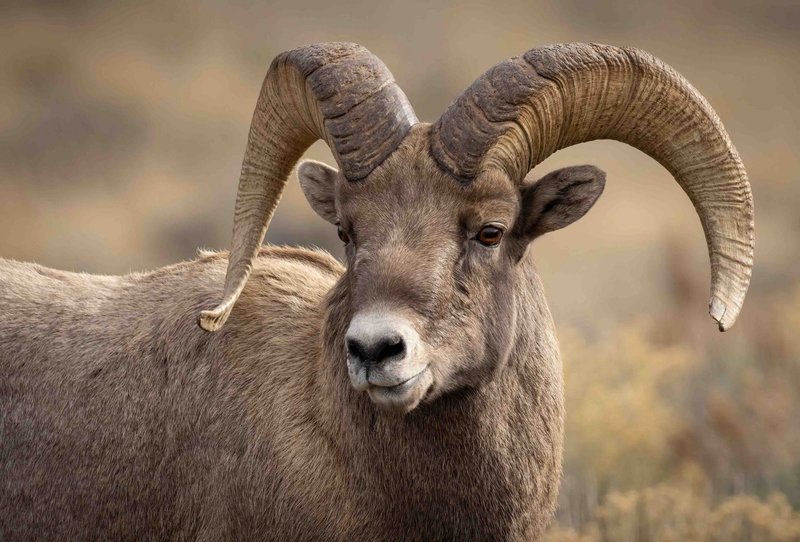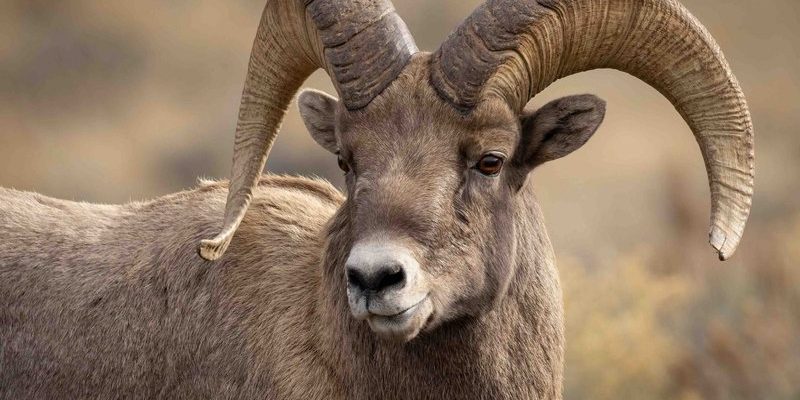
Bighorn sheep are known for their distinctive curved horns, which are not just for show. They play a crucial role in their survival and social dynamics. But there’s so much more to these fascinating animals! Let’s dive into ten captivating facts about bighorn sheep that showcase their unique adaptations and behaviors. Whether you’re a nature enthusiast or just curious, this exploration will give you a deeper appreciation for these remarkable animals.
1. The Majestic Horns
One of the first things you’ll notice about a bighorn sheep is its horns. But did you know that these horns can weigh up to 30 pounds? That’s like carrying around a small dog on your head! Bighorn sheep are unique among ruminants due to these impressive appendages, which continue to grow throughout their lives. Each year, they add a new layer, similar to the rings of a tree.
These horns are not just for display; they serve a purpose. Males use their horns to spar during mating season, showing off their strength and dominance to attract females. Imagine two heavyweight boxers going head-to-head—you can see why these battles determine who gets to mate. It’s nature’s way of ensuring the strongest genes are passed on to future generations.
2. Habitat and Range
Bighorn sheep are primarily found in North America, particularly in the rocky mountain regions. Their habitats include mountains, canyons, and even some urban areas where they’ve adapted to the presence of humans. They thrive in environments where they can climb and evade predators easily.
Their remarkable ability to navigate steep and rocky terrains is fascinating. Bighorn sheep have specialized hooves that are split, giving them incredible grip and balance on uneven surfaces. Think of it like having the perfect pair of climbing shoes! This adaptation allows them to easily escape from predators like mountain lions and coyotes, making them agile and elusive.
3. Social Structure
Bighorn sheep are social animals that live in groups. These groups, called herds, can range from small families to larger aggregations of dozens of sheep. Herd dynamics are interesting; females typically form family units, while males may band together during non-breeding seasons.
The social structure helps with survival. Herds offer protection against predators and can effectively communicate warnings when danger approaches. Imagine a cheerleading squad acting in unison—these sheep work together to outsmart threats. The closer bond among females also leads to stronger maternal care, ensuring the young lambs are well-protected and nurtured.
4. Incredible Vision
Bighorn sheep possess remarkable eyesight that is incredibly advantageous for spotting predators from a distance. Their eyes are set wider apart than ours, giving them a panoramic view of their surroundings. This helps them to detect potential threats quickly and escape before it’s too late.
Moreover, they can see well in low light conditions. Picture being at a concert with strobe lights; you’re trying to follow your friends but can barely see. Now imagine if you could see clearly even in that dim environment—that’s what bighorn sheep enjoy! This powerful vision not only keeps them safe but also helps them find food and navigate their rugged environment.
5. Adaptations to Cold Weather
Living in high altitudes means bighorn sheep face harsh winter conditions. To cope with the cold, they have developed thick woolly coats that insulate them against freezing temperatures. This is nature’s version of a cozy winter jacket!
During the winter months, you might find these sheep grazing on low shrubs and grasses. They are excellent foragers, using their keen sense of smell to locate food beneath snow. Imagine having a hidden snack that only you can sniff out—this is how bighorn sheep thrive even when it seems like food is scarce!
6. Unique Reproduction Cycle
Bighorn sheep have a fascinating breeding cycle. Mating typically occurs in the fall, and after a gestation period of about six months, the females give birth to one or two lambs in the spring. This timing is crucial, as spring is when food sources begin to flourish, providing plenty of nourishment for the new mothers.
Lambs are born with a full coat of wool and can stand and walk within hours—talk about being ready for the wild! Their mothers will keep them hidden for a few days to protect them from predators, which is similar to how some birds hide their nests. This early survival instinct is vital as young lambs learn to navigate their environment during their first few weeks of life.
7. Conservation Efforts
Unfortunately, bighorn sheep populations have faced challenges due to habitat loss, hunting, and disease. Conservation programs have been established to protect these amazing animals and their habitats. Efforts include creating wildlife corridors and restoring natural habitats, helping to ensure that future generations can enjoy the beauty of bighorn sheep.
Organizations work tirelessly to promote public awareness, too. Keeping these magnificent creatures on the landscape benefits not just them but the entire ecosystem. Much like a puzzle, every piece plays a role, and preserving bighorn sheep is essential to maintaining the balance of mountain ecosystems.
8. Amazing Climbers
These animals are often referred to as some of the best climbers in the animal world. Bighorn sheep can perform incredible feats of agility, leaping across rocky outcrops and scaling steep cliffs. Their strong legs and flexible joints allow them to move effortlessly in steep terrains.
Imagine doing parkour on a mountain—this is what bighorn sheep do every day! Their climbing abilities are not just for show; they also provide a crucial advantage when escaping predators. The steep, rugged terrain acts as a natural barrier, helping them to survive in the wild.
9. A Symbol of the Wild
Bighorn sheep hold cultural significance across various Indigenous cultures and are often seen as a symbol of strength, freedom, and resilience. They represent the untamed spirit of the West—the kind of wildlife that inspires awe and respect.
In many places, these animals are celebrated through art, storytelling, and community events. For example, some regions hold festivals to honor the bighorn sheep, promoting conservation efforts and sharing knowledge about their importance in the ecosystem. This cultural connection highlights the deep appreciation people have for these majestic creatures.
10. Fun Facts and Trivia
To wrap up our journey, here are some fun little facts about bighorn sheep that you might not know:
- Bighorn sheep can run at speeds of up to 30 miles per hour!
- They can leap as far as 20 feet, which is impressive for their size.
- Their scientific name, Ovis canadensis, means “sheep from Canada.”
- Bighorn sheep have a unique grooming behavior where they rub against rocks to clean their horns and coat.
These tidbits not only show how remarkable bighorn sheep are but also why they deserve our admiration and protection.
In conclusion, bighorn sheep are truly fascinating animals with incredible adaptations, social structures, and cultural significance. As we continue to learn about and protect them, we ensure that future generations can enjoy the beauty and wonder these magnificent creatures bring to our world. Whether you’re hiking in the mountains or simply appreciating wildlife from afar, keep an eye out for these remarkable climbers!

